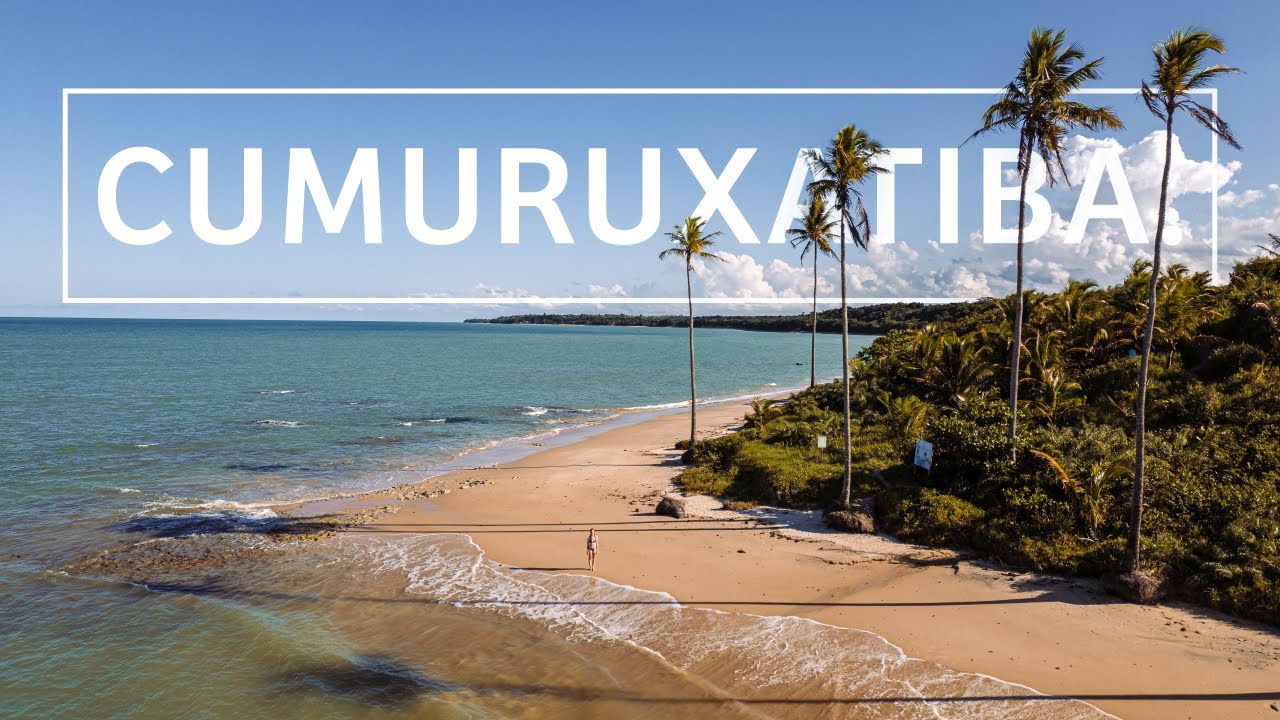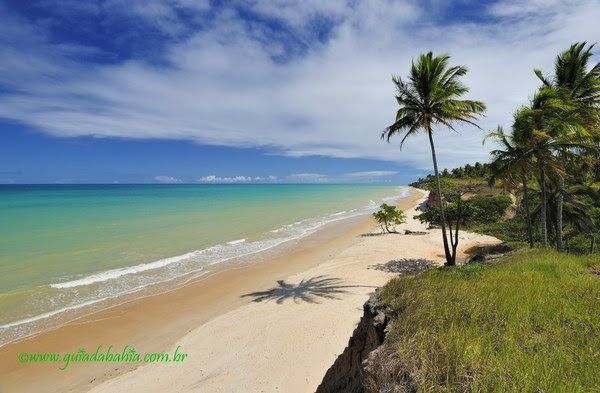Tourist attractions in the extreme south of Bahia: Cities and the Abrolhos Archipelago
The cities, beaches and the Abrolhos Archipelago, located in the extreme south of Bahia, on the Whale Coast, form a tourist route that stretches from the border between Bahia and Espírito Santo to the south of Porto Seguro.
This route is rich in biodiversity and culture, attracting tourists in search of nature and history.
Extreme south of Bahia
Coastal tourism includes the towns of Prado, Alcobaça, Caravelas, Nova Viçosa and Mucuri.
This tourist potential has been exploited for just over a decade, guaranteeing well preserved nature and many private beaches.
The region is a haven for those seeking tranquillity and contact with nature.
Humpback whales
Humpback whales, known for their docile temperament and average size of 13 metres, migrate from Antarctica and arrive off the coast of Bahia in July, staying until late October or early November.
This natural phenomenon is one of the region’s main attractions, but the area offers many other options for visitors throughout the year.
Natural and cultural attractions
The region is rich in colonial villages, churches and townhouses with tiled fronts of Portuguese ceramics.
Visitors can explore mangroves, waterfalls and endless beaches, and reach the sea, which is home to islands and beautiful coral reefs dives where it is possible to spot sea turtles.
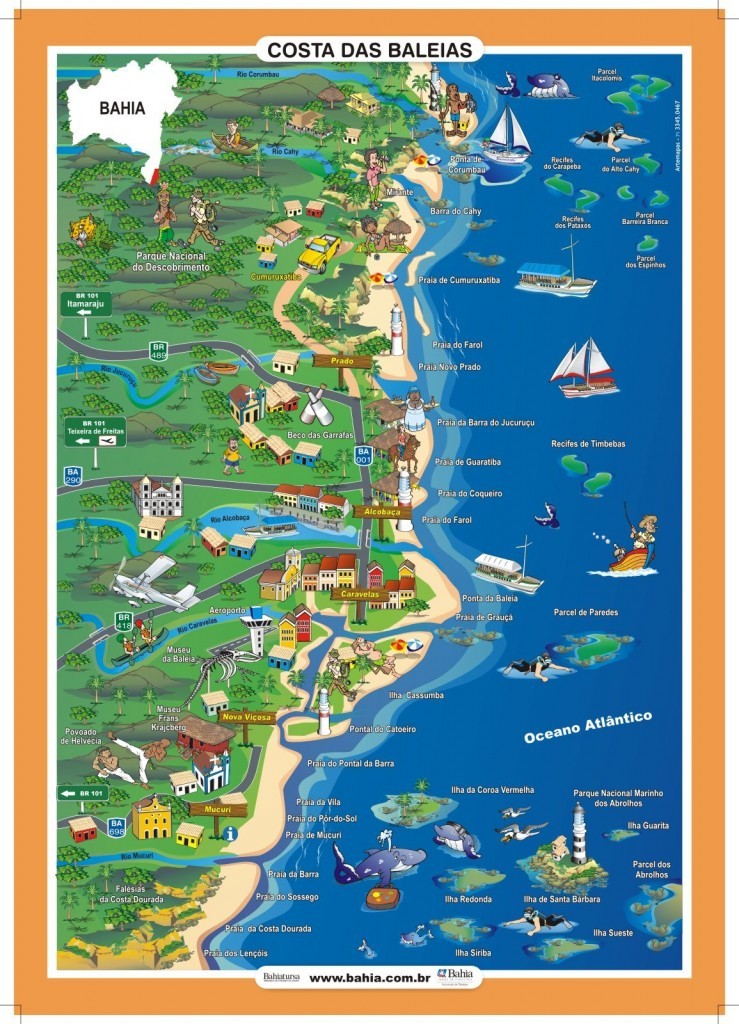
Cities and the Abrolhos Archipelago
- Mucuri
- Nova Viçosa
- Caravelas
- Alcobaça
- Prado
- Cumuruxatiba
1. City of Mucuri
Mucuri, located at the southernmost tip of the Costa das Baleias, enchants with its beaches and simplicity.
The town stretches for 11 kilometres along the seafront and is characterised by rustic houses and bars that welcome visitors in a relaxed atmosphere.

Tourist Attractions
Mucuri’s tourist attractions include
- Gigica Walkway
- Blue Lagoon
- Mucuri River, after which the city is named.
These areas offer a unique combination of natural beauty and recreational opportunities.

Guia Turístico de Mucuri na Bahia
History and culture
Originally a fishing village, Mucuri’s economy was based on fishing and subsistence agriculture. Today, the town is open to tourism, attracting visitors mainly from Minas Gerais, Goiás and Bahia.
Mucuri’s beaches
With 35 kilometres of unspoilt urban beaches, adorned by cliffs and coconut trees, Mucuri is home to paradise spots such as
- Barra Beach
- Malvinas Beach
- Sunset Beach
- Costa Dourada Beach
These beaches are ideal for relaxing and enjoying the lush nature, offering moments of peace and beauty.

2. City of Nova Viçosa
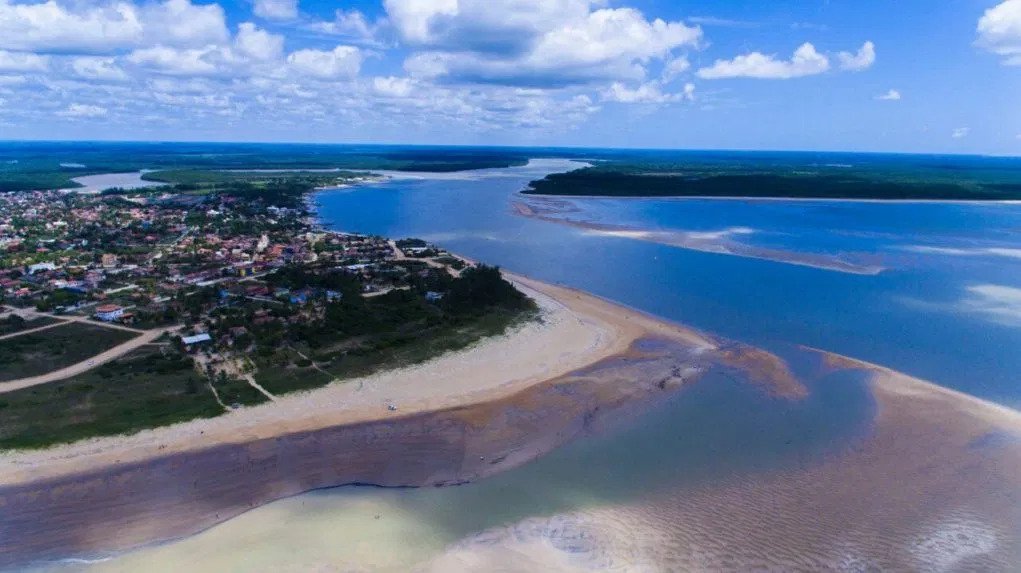
Nova Viçosa na Bahia
The last town on the Costa das Baleias is Nova Viçosa, known for its seven enchanting beaches and the Island of Coroa Vermelha, a perfect destination for snorkelling..

With a combination of natural beauty and water activities, Nova Viçosa stands out as an unmissable location for ecotourism lovers.
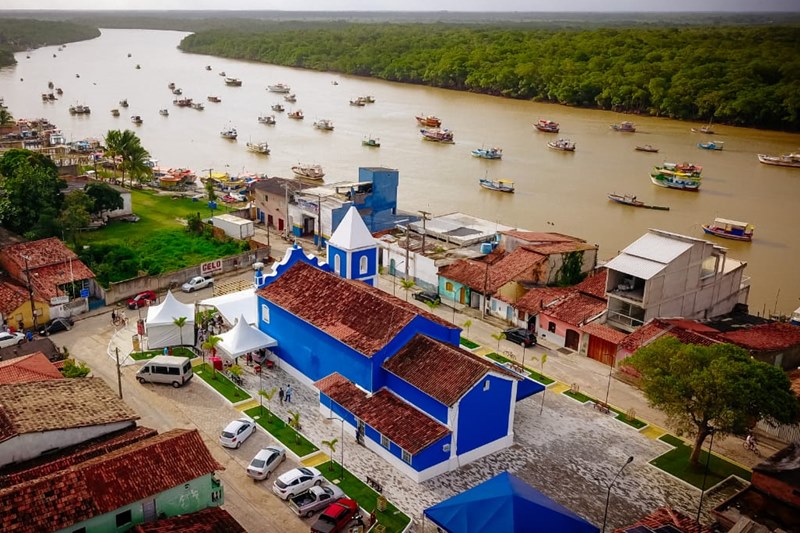
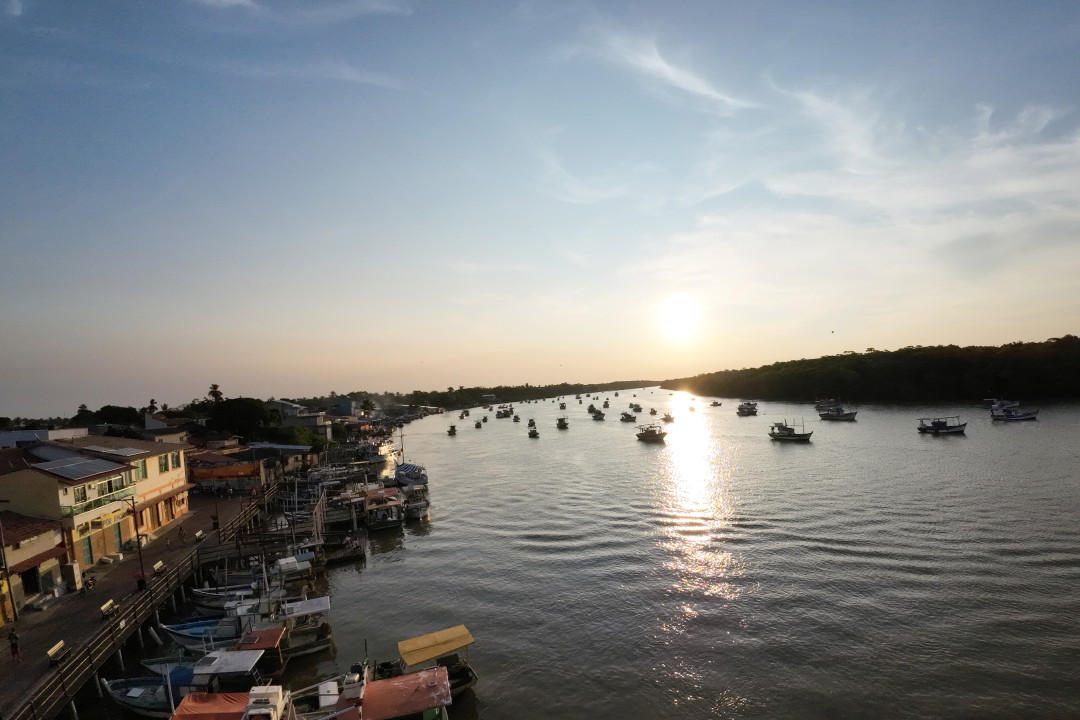
Beaches in Nova Viçosa
Among the most popular beaches in Nova Viçosa are Pau Fincado and Lugar Comum, often visited by beach volleyball enthusiasts. These lively beaches offer the perfect environment for socialising and leisure.
For those who prefer peace and quiet, the Beaches of Sabacuí and Costa do Atlântico are ideal, being practically deserted and excellent for bass and shrimp fishing.
These places are perfect for those who want to get away from it all.
The Atlantic Coast is also home to charming fishermen’s villages, which preserve the local culture and offer an authentic insight into the way of life of the region’s inhabitants.
1. Common Place Beach



This urban beach is a real hotspot for young people, with soft, warm waves and white, beaten sand, surrounded by green coconut trees.
It is one of the most frequented beaches by tourists and the local community, offering a lively and welcoming atmosphere.
2. Pontal da Barra beach

Near the centre of Nova Viçosa, on the Avenida Beira Mar, you’ll find this quiet beach, which has a port for small boats. The turbid waters are caused by the Peruípe River, which flows into the sea, giving the place a unique charm.
3. Pau Fincado Beach


A straight beach, located on the urban fringe, with weak waves and beaten sand, it is one of the most popular in the region.
There are snack stalls and wooden handicrafts which provide a pleasant experience for visitors.
4. Atlantic coast beach

A private beach with strong waves and many coconut palms, far from the city centre, it is a real refuge for sea turtles. Ideal for those who love seabass and shrimp fishing, it offers tranquillity and direct contact with nature.
5. Sabacuí Beach

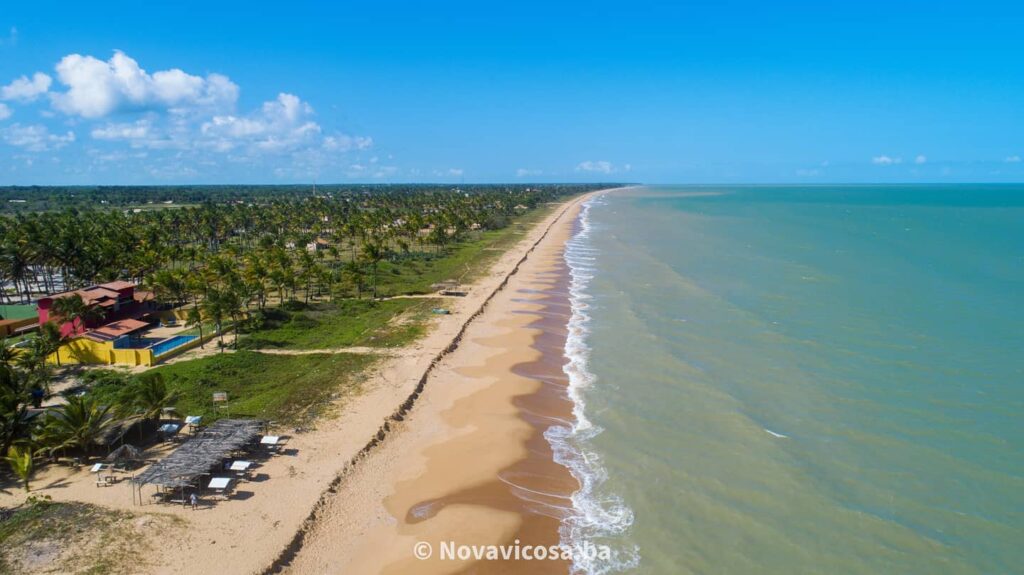
Located 2 kilometres from the town centre, the beach offers clean waters and clear sand. Its cove with calm waves is extensive, with waves scattered over the fine, loose sand.
The Sabacuí River meets the sea and forms large sand dunes. During the high season, the beach has refuges that offer comfort to visitors.
Diving and ecotourism
About two hours by boat from Nova Viçosa are coral reefs that offer excellent diving conditions.
These reefs are a spectacle in themselves, with a rich marine biodiversity that attracts divers from all over the world.
To the north, the Island of Coroa Vermelha is a must-see for its breathtaking underwater views. This maritime region is on the way to the famous abrolhos marine park, one of the most important in Brazil, making Nova Viçosa a true gateway to a natural paradise.
Must do walks in Nova Viçosa and surroundings
1. Abrolhos Archipelago
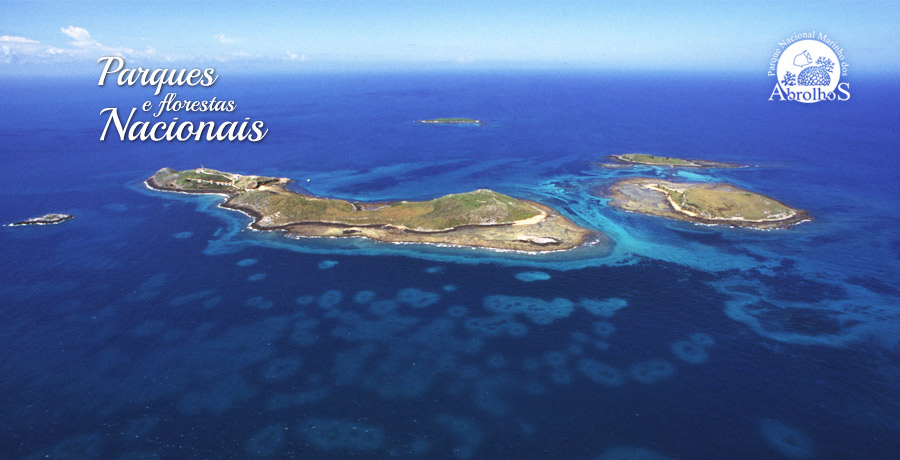
The first man to mention the Abrolhos Archipelago, Américo Vespúcio, the nautical wizard who led the 1503 expedition led by Gonçalves Coelho, was already concerned with recording the dangers of the area.
It was he who wrote in a letter: “When you approach the land, OPEN YOUR EYES”. The name Abrolhos came from a corruption of this warning, with a good dose of Portuguese accent.
On 06/04/1983, 480 years after the discovery, Brazil’s first National Marine Park, Abrolhos, was created.
It is undoubtedly a blessed place, a true paradise on earth. The archipelago has a great diversity of marine fauna, with countless species of fish, molluscs, corals, sponges, sea turtles and much more.
It is also home to a number of birds (such as boobies, thirty-réis, frigate birds, grazinas and benedictines). From July to November, the place offers a unique spectacle: the presence of humpback whales, which come to the area to breed.
2. Coroa Vermelha Island
Coroa Vermelha Island is a small, charming sandy island about 1.5 hours by schooner from the port of Nova Viçosa.
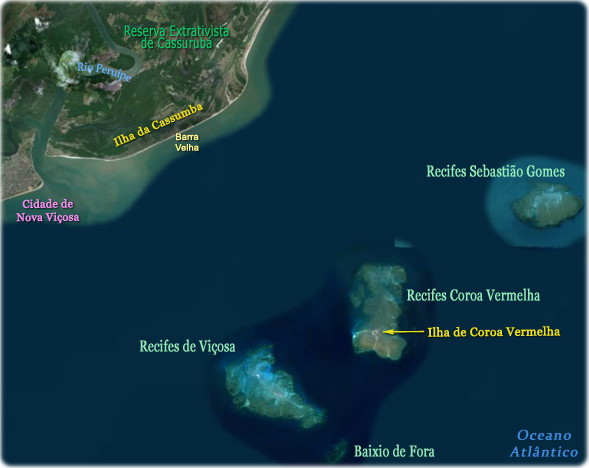
Its main attraction is the peculiar formation of coral reefs, which form the top of an ancient crown reef, rising in the middle of the Atlantic Ocean.
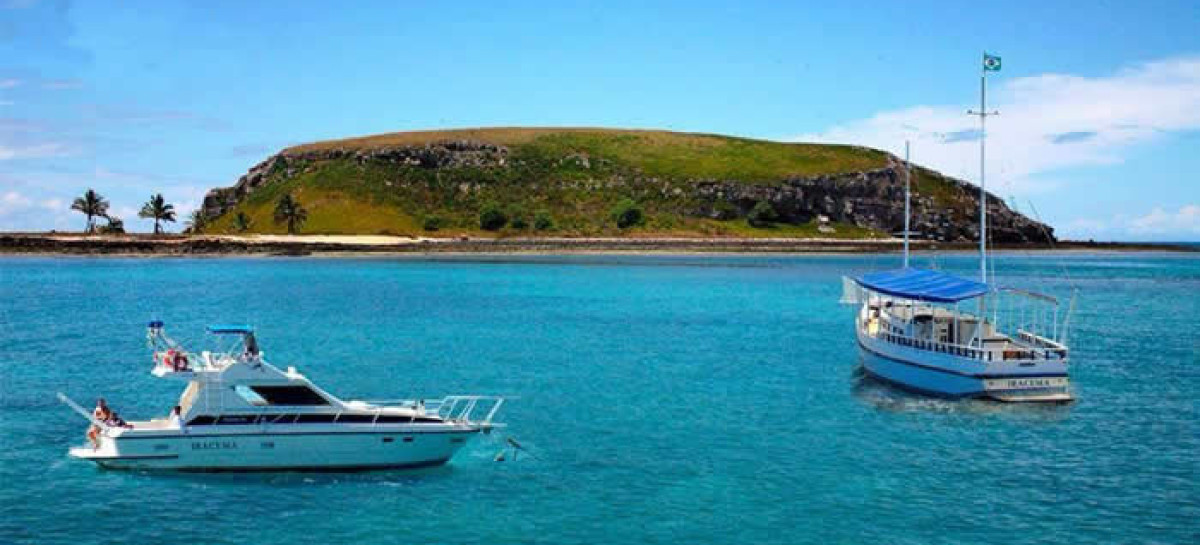
Ilha de Coroa Vermelha na Bahia
At low tide, several natural pools appear, allowing the observation of exotic marine species such as colourful fish, seagrass, starfish and turtles, among others.
3. Barra Velha Island
A memorable encounter with nature, made up of mangroves, sand banks and the Atlantic rainforest.

Ilha de Barra Velha em Nova Viçosa
The tour includes a 15-minute speedboat ride along the Peruípe River, where you can see the famous mangrove islands, full of birds and a rich marine fauna.

It is a safe and perfect option for those who enjoy walks, trails and moments of privacy in the midst of nature.
3. City of Caravelas
The city of Caravelas is located 870 kilometres from Salvador and 36 kilometres south of Prado, accessible by the BA-001 motorway, on the banks of the Caravelas River, which flows into the sea. This charming city is a destination that combines history, culture and natural beauty.
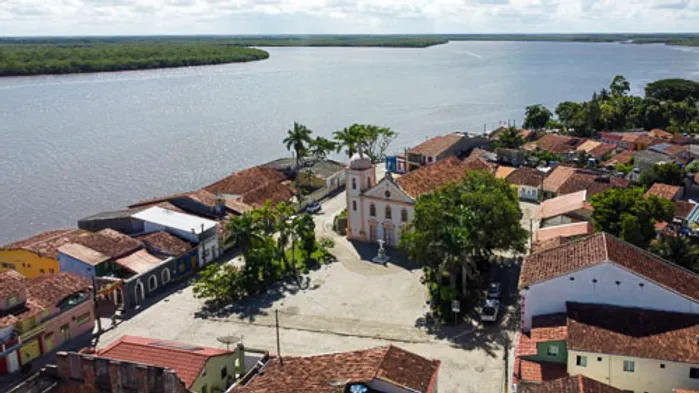
Beaches and Attractions
Along the coast, close to the city, you’ll find beautiful beaches such as Kitongo, Grauçá and Iemanjá, in Barra de Caravelas.
These beaches offer paradisiacal scenery and are ideal for leisure activities.
Caravelas is also known for its religious festivals, which attract thousands of devotees and tourists every year.
Founded in 1503, the city was an important commercial centre in the 17th and 18th centuries. Today, its colonial architecture and nearby beaches attract visitors seeking relaxation and fun.
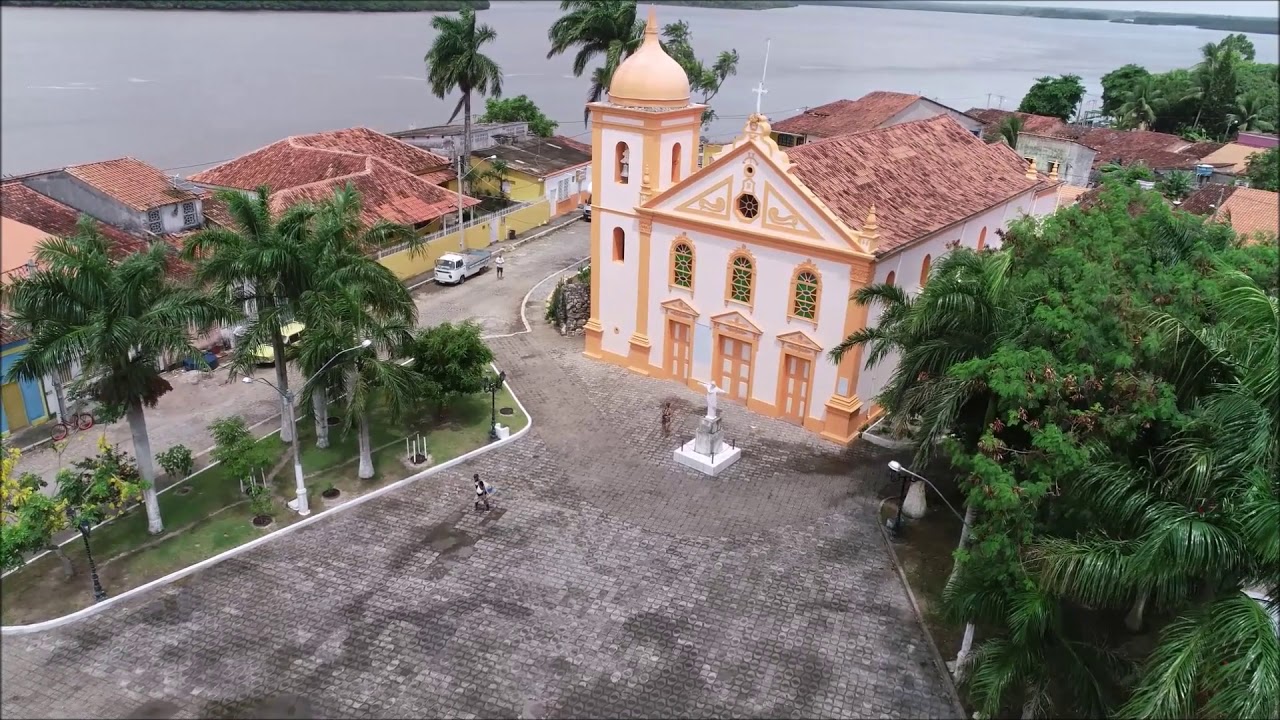
Caravelas na Bahia
Tours and ecotourism
One of the best ways to explore the area is to take a boat trip to Coroa da Barra, on the banks of the Caravelas River, opposite Barra de Caravelas.
From here you can head south to discover the Mangroves of Cassumba Island, Nova Viçosa and Coroa Vermelha, a small coral island 12 nautical miles from the city.
Caravelas is one of the three starting points to visit the Abrolhos Archipelago and the Parcel das Paredes, where you can see humpback whales in an impressive natural spectacle between July and November.
4. City of Alcobaça
Alcobaça is a small town in the south, 26 kilometres from Prado, where there are five beautiful beaches.
Among them are Coqueiro, excellent for surfing, with very strong waves, and Barra, ideal for fishing. The beaches of Farol, Alcobaça and Zeloris are also ideal for swimming.

Alcobaça na Bahia
Alcobaça is home to the Visitor Centre of the Abrolhos National Marine Park, one of the three access points to the park in the archipelago.
The town has small hotels and some good restaurants.
5. City of Prado
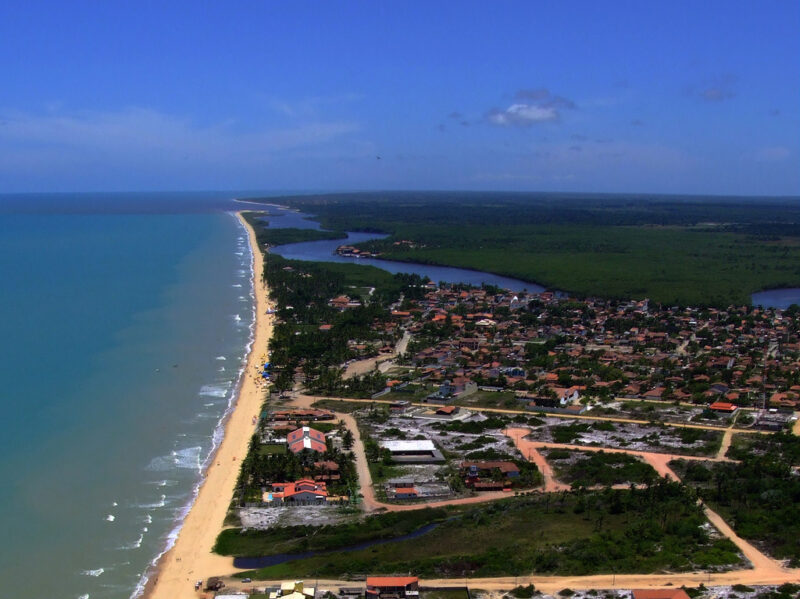
The city of Prado is located in the extreme south of Bahia, strategically situated in the region known as the Costa das Baleias (Whale Coast), because of the presence of humpback whales, and the Costa do Descobrimento, because Barra do Cahy, on Prado’s land, was the first anchorage for the Portuguese fleet in 1500.

Guia Turístico de Prado e Abrolhos
City Features
The city centre is flat, with old houses and cobbled streets offering cycling for all ages in a pleasant, rural atmosphere.
On the city’s street corners, tourists discover what Bahia has to offer, with lace dresses, turbans and colourful necklaces, serving everything from spicy acarajé to delicious cocadas.
Natural beauty
With 84 km of little-explored beaches, the city offers beautiful cliff formations in a gradient of ochre, beige and red; streams that meander along almost the entire coastline; and beaches with calm, warm and inviting waters.
Monazite sand, sought after for its medicinal properties, is found on several beaches, such as Areia Preta, Cumuruxatiba and Japara.
Tours and Activities
Boat and schooner trips will show you all the beauty of the meeting of river and sea waters, such as Barra do Jucuruçu and Barra do Cahy. From Cumuruxatiba, you can follow the same route taken by the Portuguese fleet in 1500.
For snorkelling enthusiasts or those who prefer to relax, the reefs of Guaratibas, Timbebas and Ponta do Corumbau are not to be missed.
Ponta do Corumbau, with more than 1 kilometre of sand that juts out into the sea at low tide, offers a spectacular view. At its back is the imposing 530 metre Mount Pascoal, which soothed the hearts of mariners in the 1500s.
North and south beaches
To the north of Prado there are eight beautiful beaches, ideal for trekking as many of them are formed by high, steep cliffs.
To the south there are five more beaches, including Novo Prado, Prado and Barra, which are the best for swimming.
For fishing, the best beaches are further south, Quati and Guaratiba. The former is rich in octopus and lobster, while the latter, with its long bay, is excellent for bass fishing.
1. Prado’s beaches
Most of Prado’s beaches have a similar layout: cliffs, coconut palms, and streams. There are more than 80 kilometres of coastline, with options to suit all tastes.
Peace reigns at Quati beach, which has no infrastructure. The beaches of Paixão, Prado and Novo Prado are buzz with stalls and kiosks. In the middle is Tororão, a quiet beach with only one kiosk.
1. Beach or centre of Prado

Very busy in high season, the Central Beach offers music, stalls, coconut palms, soft golden sand and plenty of waves. During the summer, concerts enliven the area and add to the atmosphere.
2. Novo Prado Beach

Located 1 km from the centre, this beach is characterised by its coarse sand. It is one of the most popular due to the excellent infrastructure of the beach huts, which offer delicious snacks, cold beer and, of course, plenty of iced coconuts.
Novo Prado is full of inns and holiday homes scattered along dirt roads. There is a high level of activity in the summer, fuelled by the beach huts. The beach has a long stretch of coarse sand, ideal for walking.
3. Passion Beach

Praia da Paixão is popular for its good infrastructure, framed by cliffs, rocks and streams. The Estrada Litorânea, which connects Prado with Cumuruxatiba, starts here and offers a beautiful view, with huge cliffs full of coconut trees.
A small river, parallel to the shore, separates the strip of sand from the area where the huts are. The beach is 13 kilometres from the centre.
4. Barra Beach

5. Guaratiba Beach

Access via a condominium leads to a long sandy beach dotted with kiosks. From there, boats take you to the reefs, perfect for snorkelling.
The beach is a meeting place for foreigners, especially Italians. It is 14 kilometres from the city centre.
6. Praia da Viçosa (Amendoeira) beach

Between the beaches of Paixão and Farol, this small cove is quiet and protected by reefs. There are no huts and the scenery is dominated by coconut palms, a solitary almond tree, cliffs and a stream. It’s ten kilometres from the centre.
7. Oyster beach

The left-hand corner offers a beautiful descent view of the cliffs.
The calm sea and the natural pool formed by the River Ostras are ideal for swimming. It is 20 kilometres from the city centre.

The most colourful cliffs in the region are on Farol Beach. From the top, next to the Navy Lighthouse, you’ll have the best view of the entire Prado coast. Extensive and full of coconut palms, it is seven kilometres from the centre.
8. Tororão Beach

The main attraction of Tororão Beach is the cascade of fresh water that cascades onto the beach. The scenery is enhanced by reefs, cliffs and a calm sea. It is 18 kilometres from the centre and has a hut serving snacks.
9. Lagoa Pequena and Lagoa Grande

Lagoa Pequena beach, to the south, has a small strip of sand and a few stalls and restaurants.
To the north, at Lagoa Grande beach, you can also swim in fresh water – the dark lagoon joins the sea at high tide.
10. Guaratiba Beach
The semi-deserted Guaratiba Beach (facing south) is ideal for those seeking relaxation in a setting of calm, shallow waters and lots of coconut palms. With no infrastructure of huts, it is 16 kilometres from the centre and is the continuation of Guaratiba Beach.
2. Cliffs
The Prado coast is a natural spectacle with kilometres of cliffs that stand out in a gradient of colours ranging from ochre, beige and red, with undergrowth covering some places.
These cliffs dominate the environment, imposing and creating an unparalleled beauty. The sea, always inviting, is ideal for snorkelling, making Prado an unmissable destination for nature lovers.
3. Mangroves
Mangroves are a critical ecosystem in tropical and subtropical regions, formed by the meeting of fresh water from rivers and salt water from the sea.
These mangroves, known as seaside forests, have soils composed of decomposed organic matter and a clay structure, creating a favourable environment for marine life.
They are natural nurseries, essential for the reproduction of various species such as fish and crustaceans, which in turn feed the food chain, including humans.
The abundance and variety of foods from these ecosystems, such as fish and seafood, demonstrate their ecological and economic importance.
In Prado, the mangrove areas are practically untouched, offering a unique experience of contact with this vibrant and exuberant environment. Walks along its waters reveal the beauty and biodiversity of this essential ecosystem.
4. Jucuruçu River
The Jucuruçu River offers stunning scenery as it winds between the town of Prado and the beach, with its calm, crystal-clear waters. Along the river are banks surrounded by practically untouched mangroves, creating a natural and unspoilt atmosphere.
The surrounding lush vegetation, with green forests and mangroves, makes for memorable walks, allowing visitors to connect with the unspoilt nature of the region.
The scenery is framed by rustic wharves, which serve as anchorages for colourful fishing boats engaged in artisanal fishing that respects and preserves the local ecological balance.
This peaceful and harmonious environment is the perfect refuge for lovers of nature and marine life.
6. City of Cumuruxatiba
Cumuruxatiba, a cosy fishing village, is a place where the rhythm of life runs smoothly.
The exuberant nature of this village enchants visitors with its beautiful beaches, cut out by small rivers of clean, rusty water, contrasting with the sea of warm waters and preserved areas of Atlantic forest.


This tour is by boat and includes a stop at the Pataxó Corals, an ideal spot for snorkelling and underwater fishing. It is also the place where you can see MONTE PASCOAL, the first Brazilian point discovered by the Portuguese Lunettes.
The parcels surrounding the village beach are perfect for snorkelling and diving. Also noteworthy are the colourful reefs of Itacolomi and the corals of Pataxó.
For snorkelling enthusiasts, the Abrolhos Archipelago, 70 kilometres off the coast, is the ideal destination, with its rich marine life, caves and cliffs.
Cities and the Abrolhos Archipelago in the extreme south of Bahia
Publicações Relacionadas
Whale Coast in the far south of Bahia - Travel Guide
Alcobaça is a fairly simple place with good beaches, beautiful architecture and history
Catabrigas Waterfall and Its Ecological Trails
Discover Cumuruxatiba: A Hidden Paradise in Bahia, Brazil
Characteristics of the Humpback Whale and its Refuges in Brazil
Nova Viçosa is the gateway to the Abrolhos Archipelago
Caravelas is a historic town in the far south of Bahia state
Discover the Untouched Beauty of Mucuri and the Costa Dourada
Prado is the gateway to the Whale Coast
Abrolhos Archipelago - Characteristics, Geography and Tourism
Ponta de Corumbau: Explore Beaches and Nature
This post is also on:
Português
English
Deutsch
Español
Français
